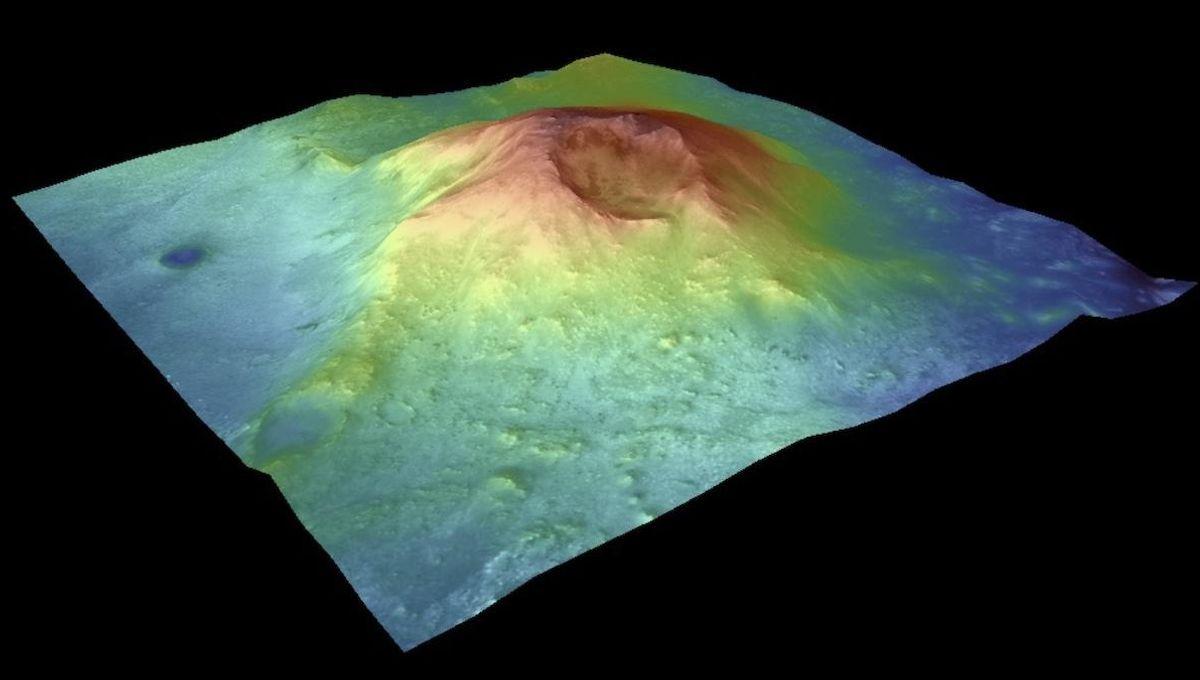NASA Might Have Accidentally Landed Near A Volcano On Mars

NASA Might Have Accidentally Landed Near A Volcano On Mars
Mars is home to the tallest mountain in the Solar System, Olympus Mons, an extinct volcano three times as tall as Mount Everest. There are several other examples of volcanoes and volcanic features across the Red Planet, though new research suggests that we might have been missing many. Evidence for a volcano has been found on the rim of Jezero Crater, where NASA’s Perseverance has been exploring for the last four years.
This is a great discovery. Jezero Mons is about half the size of the crater itself, roughly 21 kilometers (13 miles) across. It is less than 2,000 meters (6,562 feet) tall, and while it has a crater, it lacks other obvious volcanic features. It was there, hiding in plain sight – but for a long time, there was circumstantial evidence of its possible nature. Perseverance has been analyzing and collecting samples since 2021. With Jezero Crater being the bottom of an ancient lake, the expectation was to find an abundance of sedimentary rocks, formed as the water receded. However, the rover also found plenty of volcanic rocks. Suspicion fell again on that peculiar Jezero Mons. “A previous study led by Briony Horgan (professor of planetary science at Purdue University) had also suggested that Jezero Mons could be volcanic,” lead author Sara C. Cuevas-Quiñones from Brown University said in a statement. “I began wondering if there was a way to home in on these suspicions.” Cuevas-Quiñones did this work as an undergraduate during a summer program at Georgia Tech under Professor James Wray, who had suspected a volcanic origin for this mountain since 2007, when he was a graduate student. “I was looking at low-resolution photos of the area and noticed a mountain on the crater’s rim,” Wray explained. “To me, it looked like a volcano, but it was difficult to get additional images.” The crater was newly discovered at the time, and a lot of attention was given to the water feature, including its stunning delta. This is why it was chosen as a landing site for Perseverance. If there were water, there might have been life. Volcanism actually makes habitability a tad bit possible, with secondary volcanic activity in the water providing energy and chemistry to fledgling life forms. “Volcanism on Mars is intriguing for a number of reasons — from the implications it has on habitability, to better constraining the geologic history,” Wray added. “Jezero Crater is one of the best studied sites on Mars. If we are just now identifying a volcano here, imagine how many more could be on Mars. Volcanoes may be even more widespread across Mars than we thought.” “The coalescence of these two types of systems makes Jezero more interesting than ever,” continued Wray. “We have samples of incredible sedimentary rocks that could be from a habitable region alongside igneous rocks with important scientific value.” The research was possible thanks to observations made by new and old orbiters, some of which the Trump administration wants to defund or shut down, such as Mars Odyssey. The budget also cancels the Mars Sample Return, which is due to bring the rocks taken by Perseverance (including the most exciting for the possibility of life on Mars) back to Earth for detailed analysis, including detailed aging of these rocks. “Mars is the best place we have to look in our solar system for signs of life, and thanks to the Perseverance Rover collecting samples in Jezero, the United States has samples from the best rocks in the best place on Mars,” Wray stated. “If these samples are returned to Earth, we can do incredible, groundbreaking science with them.” The study is published in the journal Communications Earth & Environment.


